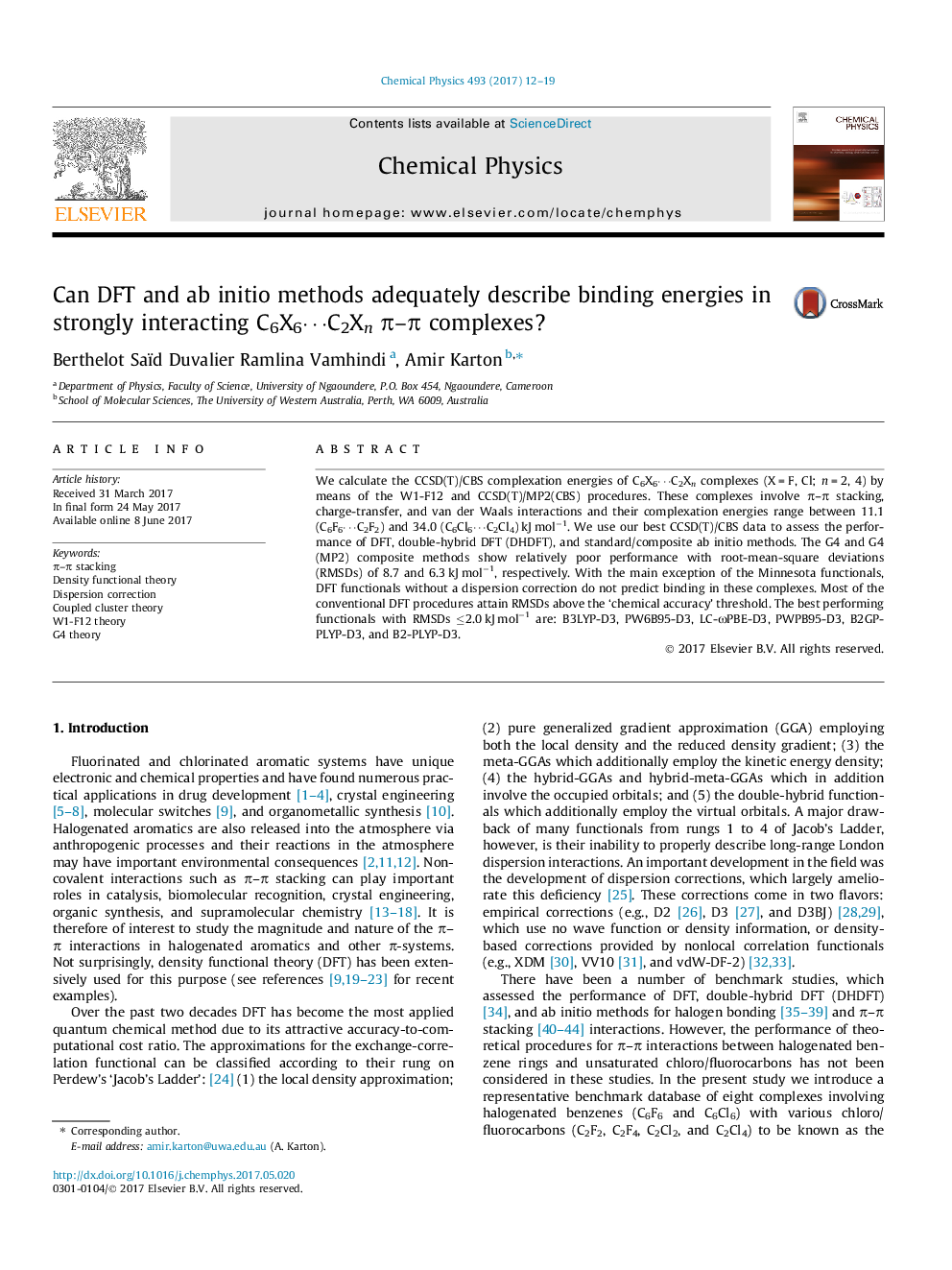| کد مقاله | کد نشریه | سال انتشار | مقاله انگلیسی | نسخه تمام متن |
|---|---|---|---|---|
| 5372613 | 1504178 | 2017 | 8 صفحه PDF | دانلود رایگان |

- Determines CCSD(T)/CBS binding energies for C6X6â¯C2Xn complexes.
- The complexation energies range between 11.1 and 34.0Â kJÂ molâ1.
- Evaluates the performance of a wide range of DFT and ab initio methods.
- The G4 and G4(MP2) methods exhibit surprisingly poor performance.
- Identifies the best performing DFT and double-hybrid DFT functionals.
We calculate the CCSD(T)/CBS complexation energies of C6X6â¯C2Xn complexes (X = F, Cl; n = 2, 4) by means of the W1-F12 and CCSD(T)/MP2(CBS) procedures. These complexes involve Ï-Ï stacking, charge-transfer, and van der Waals interactions and their complexation energies range between 11.1 (C6F6â¯C2F2) and 34.0 (C6Cl6â¯C2Cl4) kJ molâ1. We use our best CCSD(T)/CBS data to assess the performance of DFT, double-hybrid DFT (DHDFT), and standard/composite ab initio methods. The G4 and G4(MP2) composite methods show relatively poor performance with root-mean-square deviations (RMSDs) of 8.7 and 6.3 kJ molâ1, respectively. With the main exception of the Minnesota functionals, DFT functionals without a dispersion correction do not predict binding in these complexes. Most of the conventional DFT procedures attain RMSDs above the 'chemical accuracy' threshold. The best performing functionals with RMSDs â¤2.0 kJ molâ1 are: B3LYP-D3, PW6B95-D3, LC-ÏPBE-D3, PWPB95-D3, B2GP-PLYP-D3, and B2-PLYP-D3.
71
Journal: Chemical Physics - Volume 493, 17 August 2017, Pages 12-19